The Vietnam War- Causes, Protests, and Legacy

The Vietnam War: Causes, Protests, and Legacy
The Vietnam War remains one of the most divisive conflicts in American history. Lasting from the mid-1950s to 1975, it was a struggle rooted in the global Cold War but fought in the jungles and villages of Southeast Asia. For the United States, it became a war of ideology, strategy, and politics, while for Vietnam, it was also a war of independence and reunification. Beyond the battlefield, the war ignited mass protests at home, reshaped American politics, and left a legacy that still shapes U.S. foreign policy.
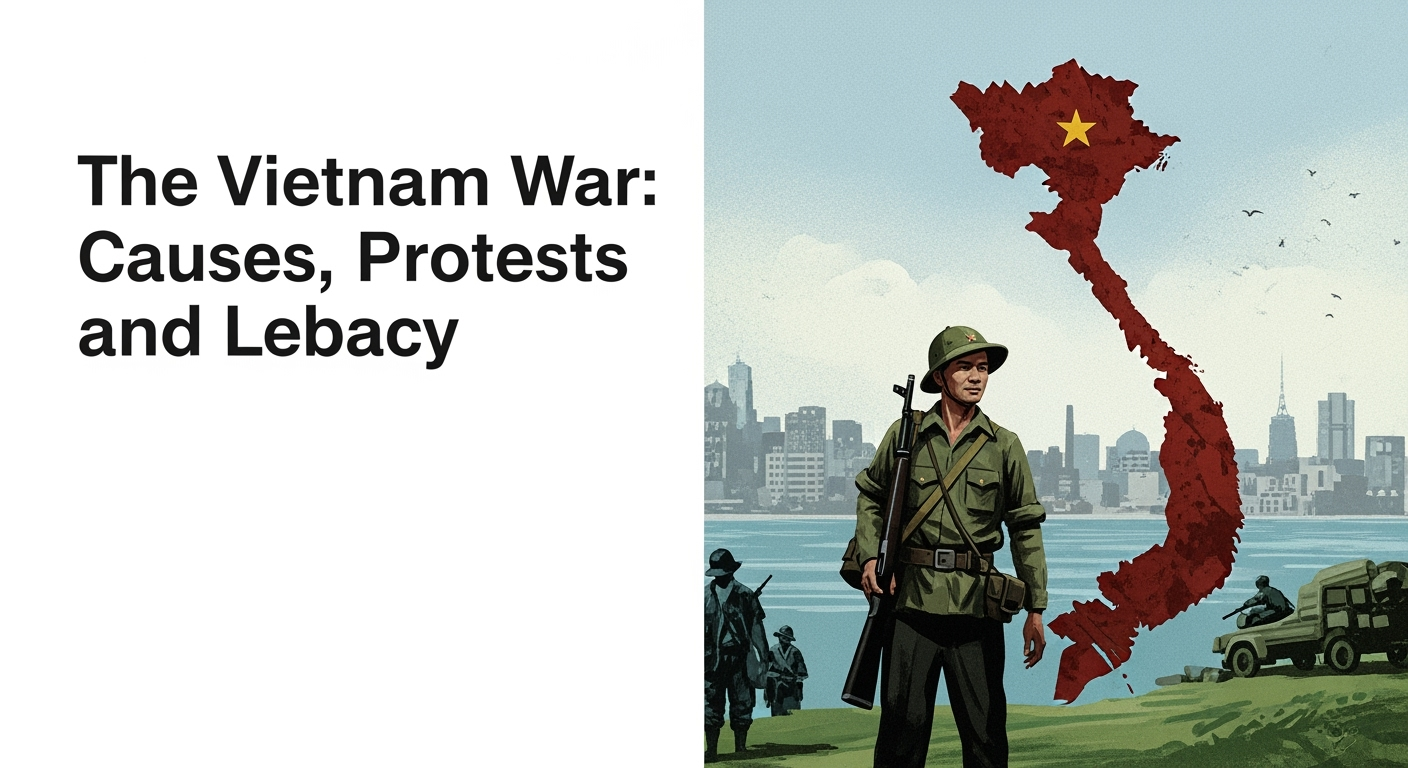
The Roots of the Conflict
Vietnam’s struggle did not begin with the arrival of American troops. For centuries, the region had been under foreign control, first by China, later by France. After World War II, Vietnamese nationalist leader Ho Chi Minh declared independence, drawing inspiration from both American ideals and communist principles.
France, unwilling to lose its colony, returned to reassert control, sparking the First Indochina War. This conflict ended in 1954 with the Geneva Accords, which temporarily divided Vietnam at the 17th parallel. North Vietnam, led by Ho Chi Minh, established a communist government, while South Vietnam was backed by the United States and other Western allies. Elections meant to reunify the country never occurred, and tensions deepened.
For U.S. leaders, the division of Vietnam was part of a larger global struggle. The fear of communism spreading throughout Southeast Asia, described as the “domino theory,” became a guiding principle. Washington committed itself to supporting South Vietnam as a bulwark against communist expansion.
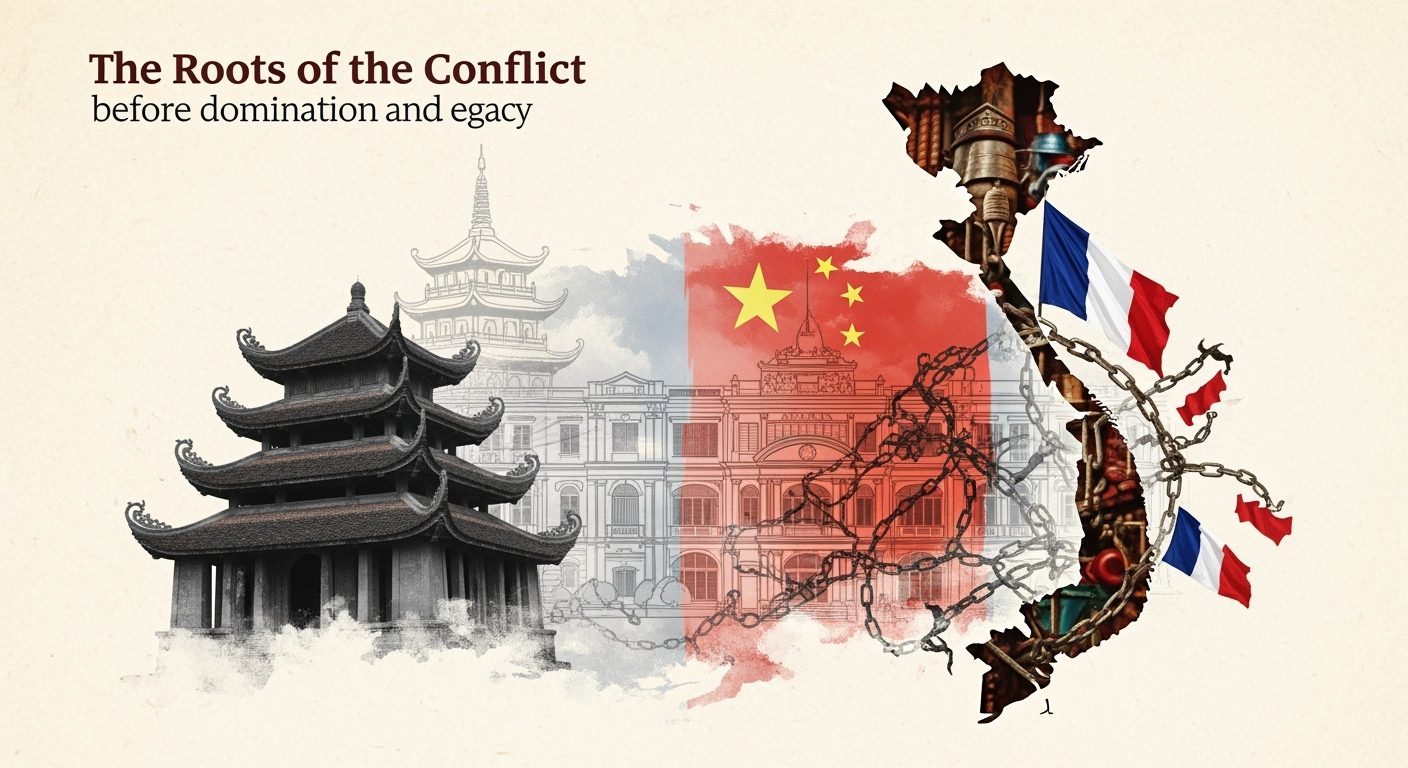
Escalation and American Involvement
At first, U.S. involvement was limited to advisors and financial aid. Under President John F. Kennedy, the number of military advisors in South Vietnam grew, but it was the Gulf of Tonkin incident in 1964 that triggered a massive escalation. After reports that North Vietnamese forces had attacked U.S. ships, Congress passed the Gulf of Tonkin Resolution, giving President Lyndon B. Johnson broad authority to wage war.
American troops soon poured into Vietnam. At its height, more than half a million U.S. soldiers were stationed there. The war was fought not on traditional front lines but through guerrilla tactics, ambushes, and search-and-destroy missions. The Viet Cong, communist insurgents in the South, blended with civilians, making it difficult for U.S. forces to distinguish enemy from ally.
Despite superior firepower, the U.S. found itself bogged down. Jungle terrain, determined resistance, and widespread support for the North among many Vietnamese made victory elusive. Major battles, such as those at Khe Sanh and Hue, demonstrated the intensity of the conflict but offered no decisive outcome.
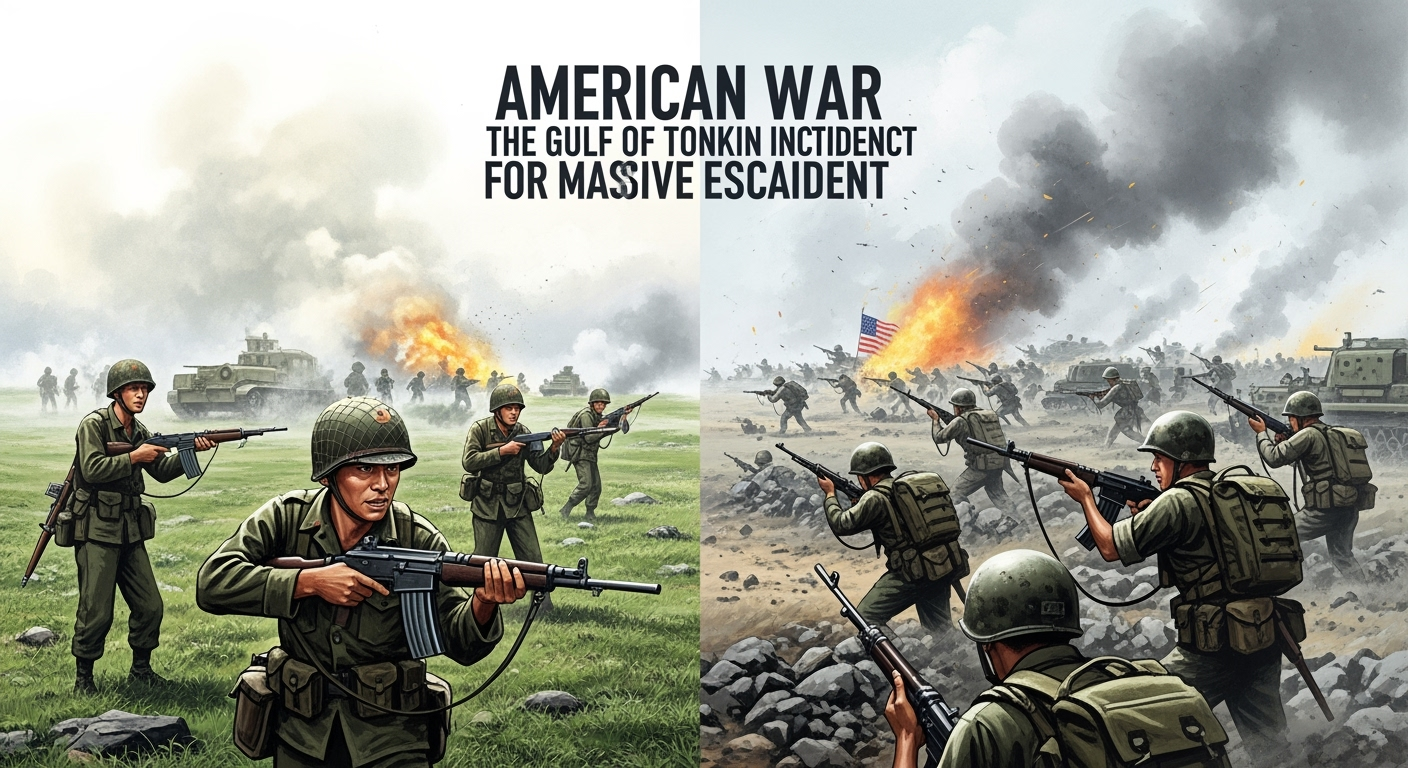
The War at Home
As the war escalated abroad, dissent grew at home. The Vietnam War was the first televised war, with nightly news broadcasts showing graphic images of combat and civilian suffering. Many Americans began to question not only the progress of the war but also its purpose.
College campuses became centers of protest. The anti-war movement united students, clergy, civil rights activists, and ordinary citizens. Demonstrations grew in size and intensity, culminating in massive marches on Washington. In 1970, the Kent State shootings, in which National Guard troops killed four students during a protest, became a symbol of the deep divisions within the country.
Music and culture reflected the discontent. Songs like “Fortunate Son” by Creedence Clearwater Revival and “Give Peace a Chance” by John Lennon became anthems of protest. The counterculture movement of the 1960s intertwined with opposition to the war, challenging authority and traditional values.
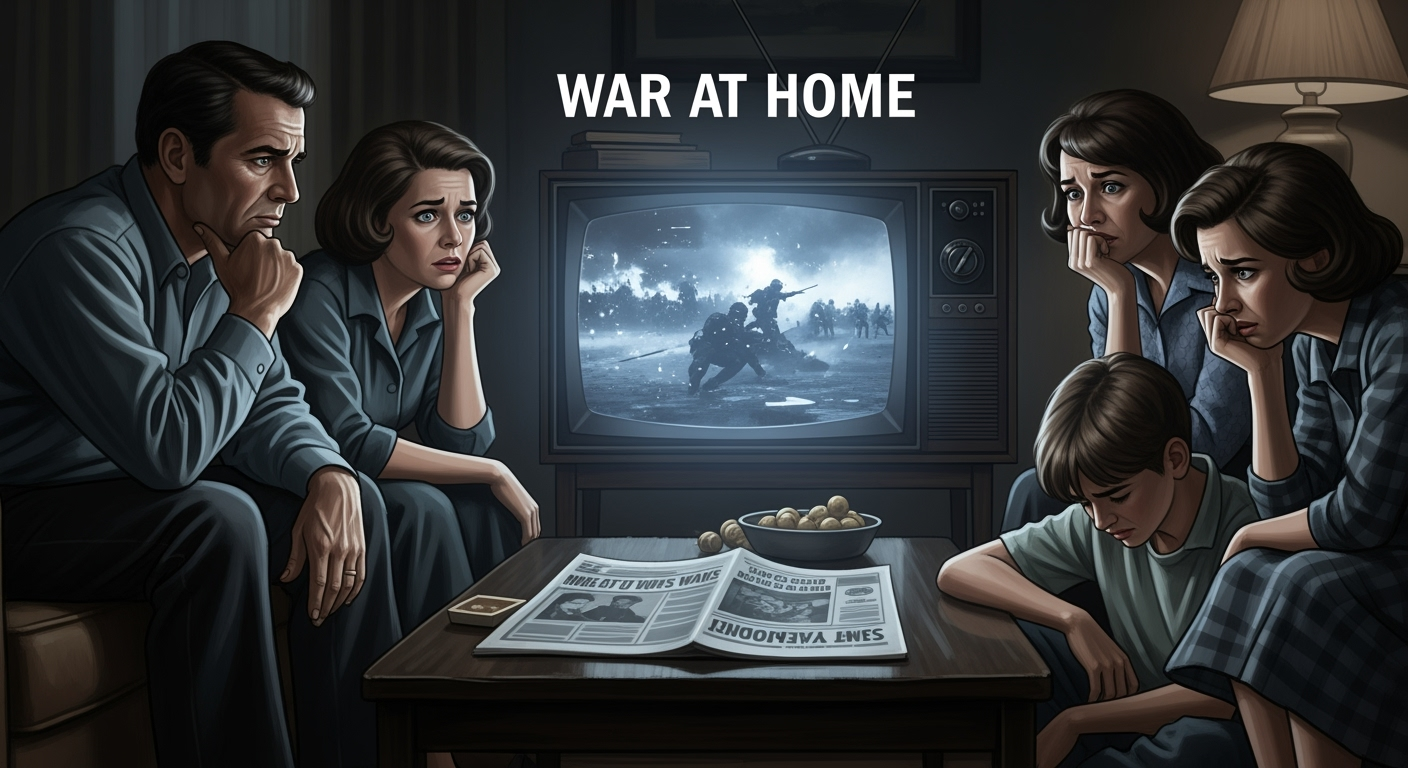
The Tet Offensive
A turning point came in early 1968 with the Tet Offensive. During the Vietnamese lunar new year, North Vietnamese and Viet Cong forces launched a surprise series of coordinated attacks across South Vietnam, striking cities, towns, and even the U.S. embassy in Saigon.
Though militarily the offensive was a setback for the communists, who suffered heavy casualties, it was a psychological victory. The sheer scale of the attacks shocked the American public, who had been told that victory was near. Confidence in government leaders plummeted, and support for the war eroded even further.
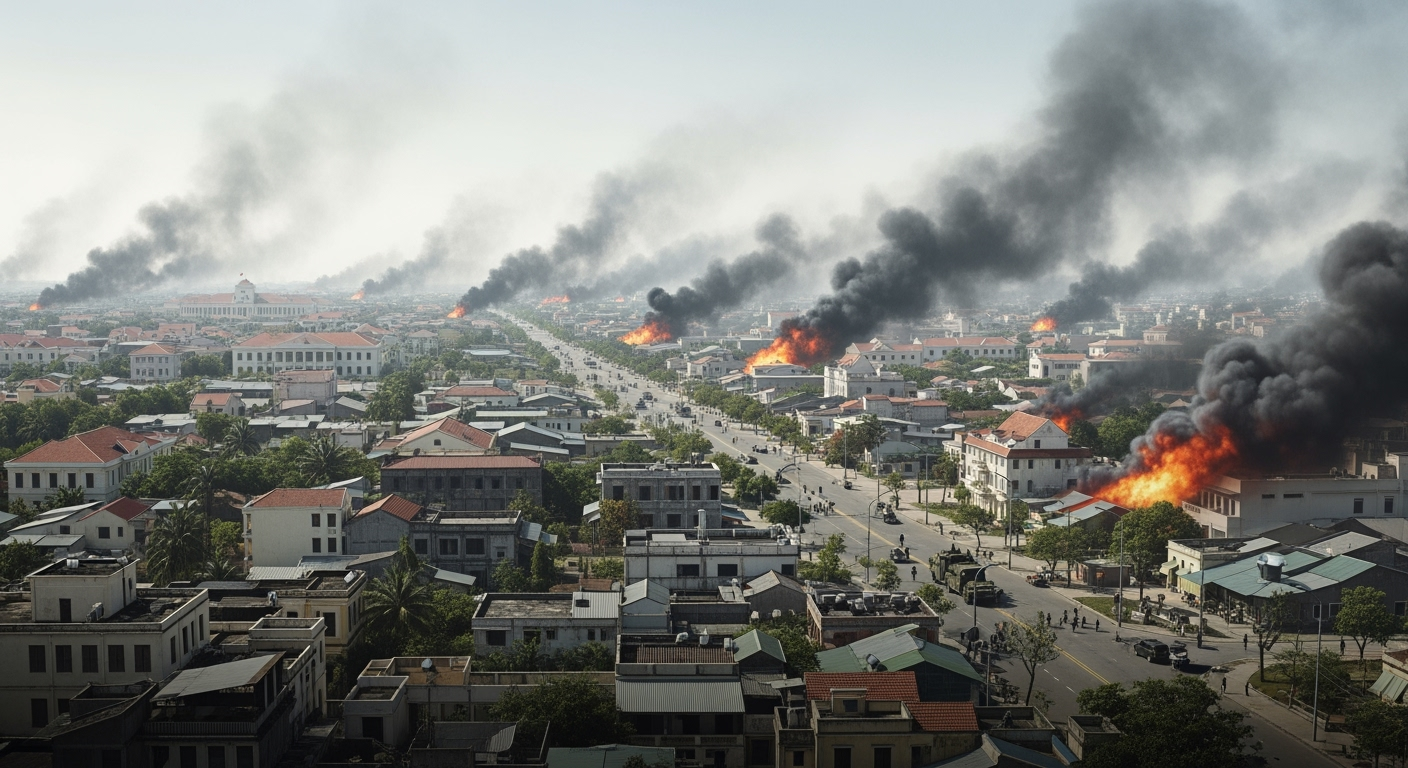
Nixon and “ Vietnamization ”
When Richard Nixon became president in 1969, he promised to achieve “peace with honor.” His administration pursued a strategy known as “Vietnamization,” gradually withdrawing U.S. troops while increasing the responsibility of South Vietnamese forces.
At the same time, Nixon expanded the war into neighboring Cambodia and Laos, targeting communist supply routes known as the Ho Chi Minh Trail. These secret bombings and invasions sparked outrage at home, fueling protests and deepening distrust of government.
Diplomatic efforts eventually bore fruit. Negotiations in Paris led to a ceasefire agreement in 1973, and the last U.S. combat troops left Vietnam that year. However, fighting between North and South Vietnam continued.
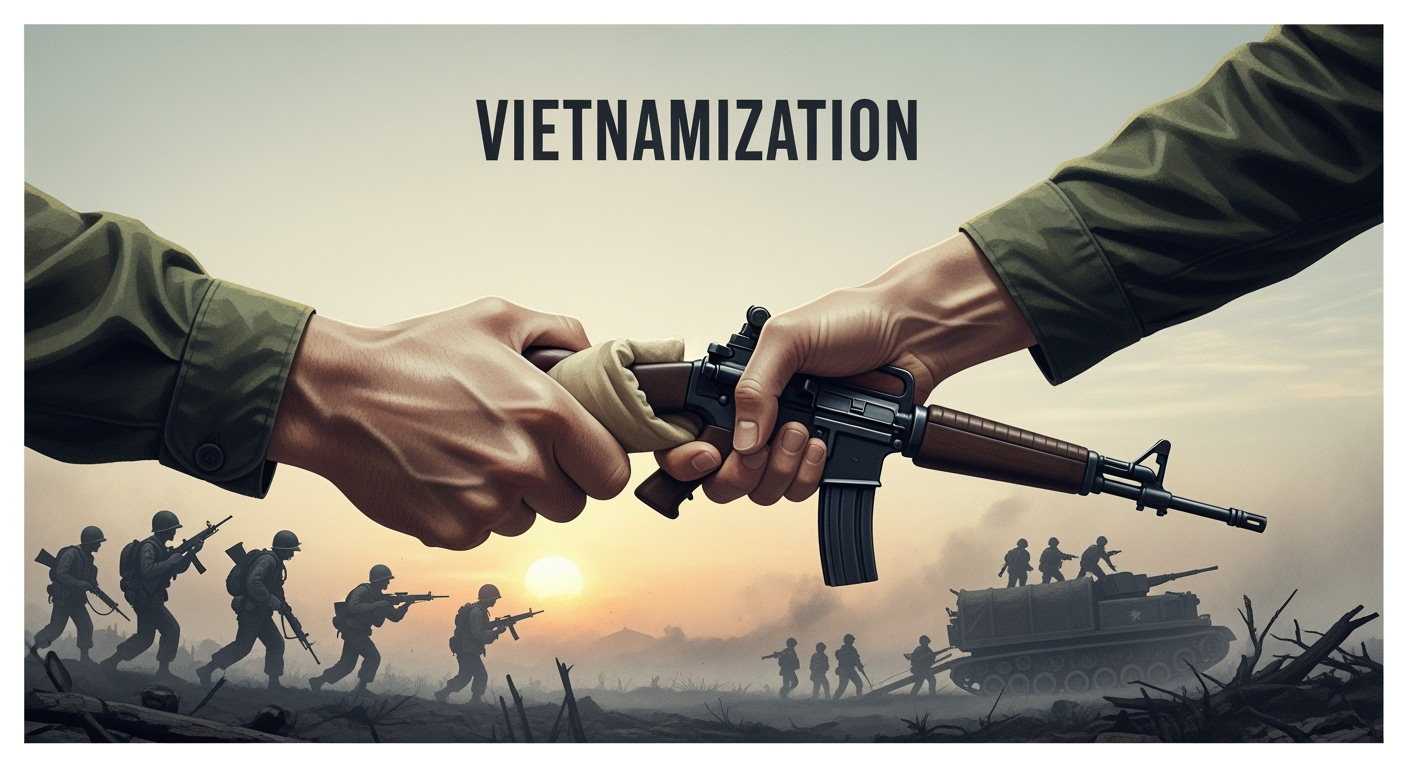
The Fall of Saigon
In April 1975, North Vietnamese forces launched a final offensive. The South Vietnamese government, weakened and lacking U.S. support, quickly collapsed. On April 30, tanks of the North Vietnamese Army rolled into Saigon, and the city fell. Helicopters lifted Americans and South Vietnamese allies from rooftops in a desperate evacuation. The images of people clinging to helicopters became lasting symbols of America’s most painful defeat.
The war officially ended with the reunification of Vietnam under communist control. For the Vietnamese, it was a victory that secured independence and unity, though it came at enormous cost. Millions of soldiers and civilians had died, and the country faced decades of rebuilding.
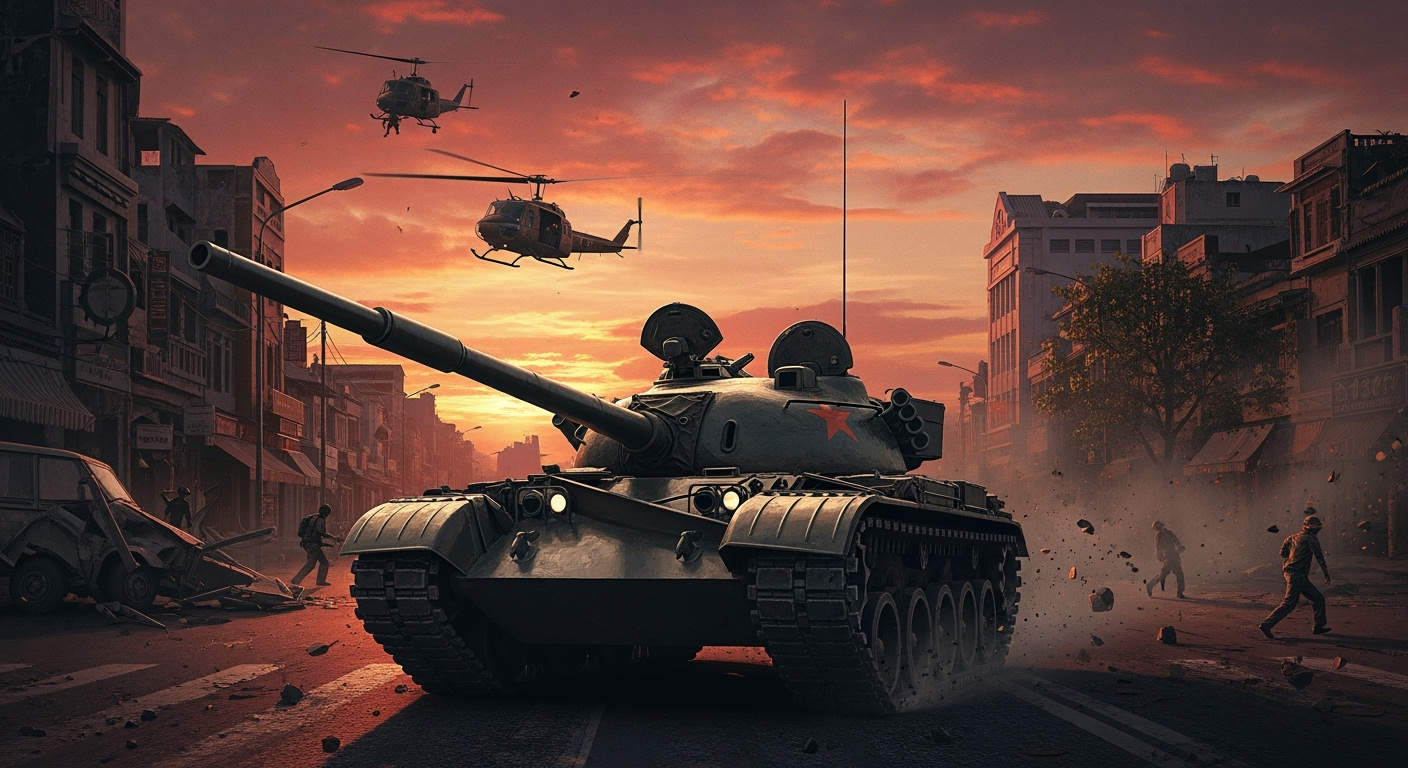
The Human and Political Cost
For the United States, the Vietnam War exacted a heavy toll. More than 58,000 Americans were killed, and hundreds of thousands were wounded. Many veterans returned home to a divided nation, facing indifference or hostility rather than recognition. The trauma of combat and exposure to chemicals such as Agent Orange left lasting scars.
Politically, the war undermined trust in government. The Pentagon Papers, leaked in 1971, revealed that successive administrations had misled the public about the war’s progress. The credibility gap between leaders and citizens widened, fueling cynicism that persisted for decades.
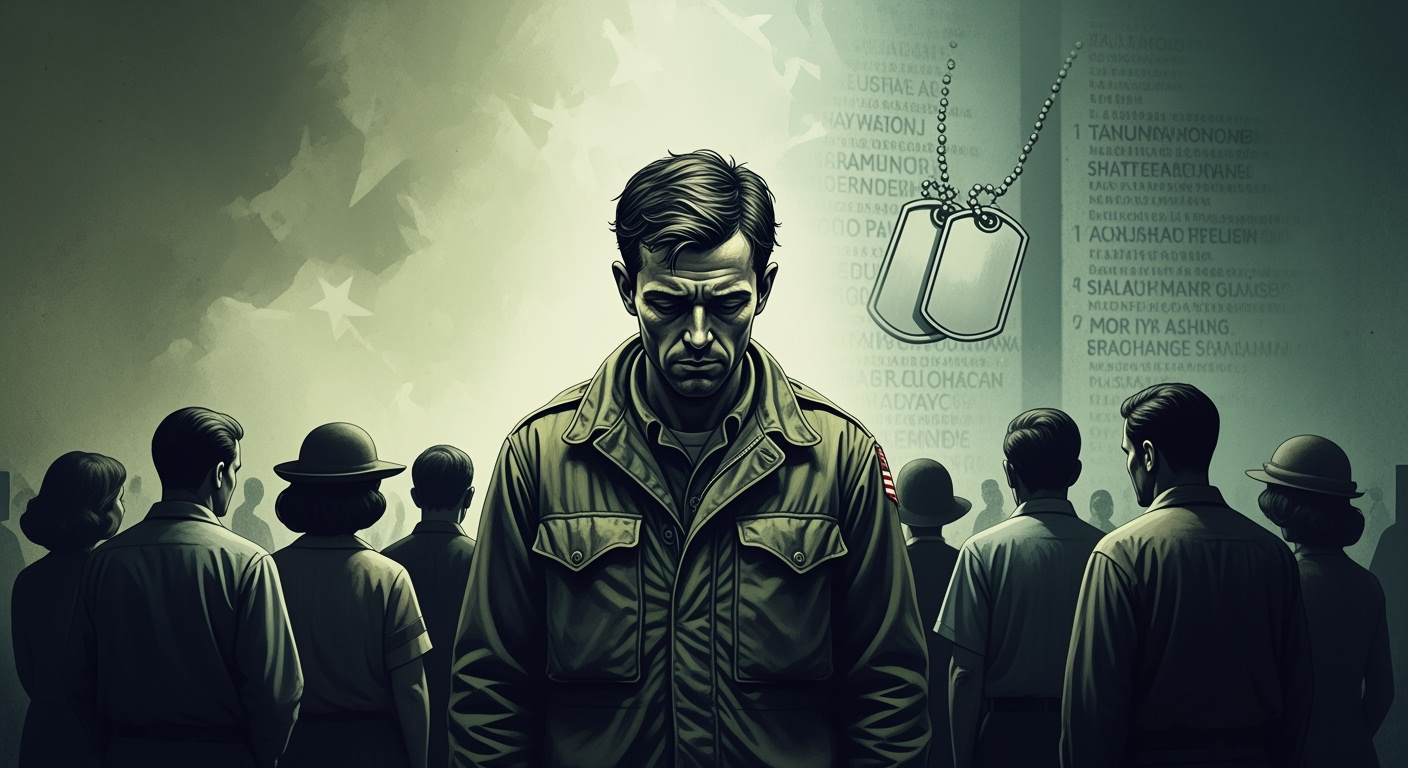
The Legacy of Vietnam
The Vietnam War reshaped U.S. foreign policy. It made leaders more cautious about military intervention, a hesitancy often referred to as “Vietnam Syndrome.” The war also influenced debates about presidential power, with Congress passing the War Powers Resolution in 1973 to limit the ability of presidents to commit troops without approval.
Culturally, the war left a lasting imprint on literature, film, and memory. Works such as Apocalypse Now, The Things They Carried, and Born on the Fourth of July captured the confusion, brutality, and moral complexity of the conflict. For veterans and families, the Vietnam Veterans Memorial in Washington, D.C., became a place of healing and reflection.
For Vietnam itself, the war was both a tragedy and a triumph. The nation endured immense suffering but ultimately achieved independence. Today, Vietnam has rebuilt and opened to the world, yet the memory of the war remains central to its history.
The Vietnam War was not simply a military conflict. It was a clash of ideologies, a test of political will, and a struggle that divided nations and generations. Its causes lay in colonial history and Cold War fears. Its protests reflected deep divisions within American society. Its legacy continues to shape the way the United States approaches foreign policy and remembers its past.
By examining the causes, protests, and legacy of the Vietnam War, we see not only the cost of conflict but also the resilience of those who lived through it. The war serves as a reminder of the importance of questioning power, of the human cost of military decisions, and of the enduring struggle to balance ideals with realities.
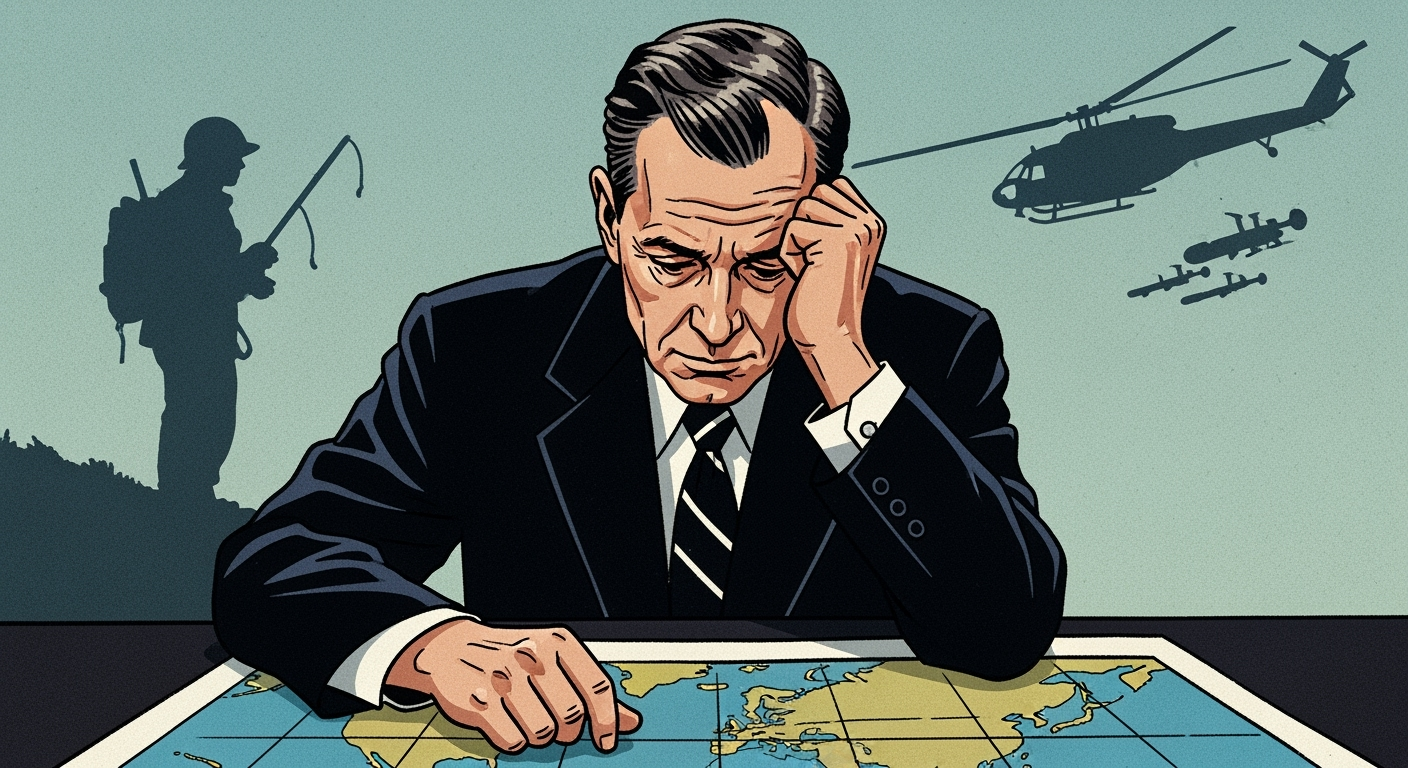
Disclaimer
This article is for educational and informational purposes only. While HistoryReveal.com strives for accuracy, historical interpretation may vary, and readers are encouraged to consult additional sources for deeper study.